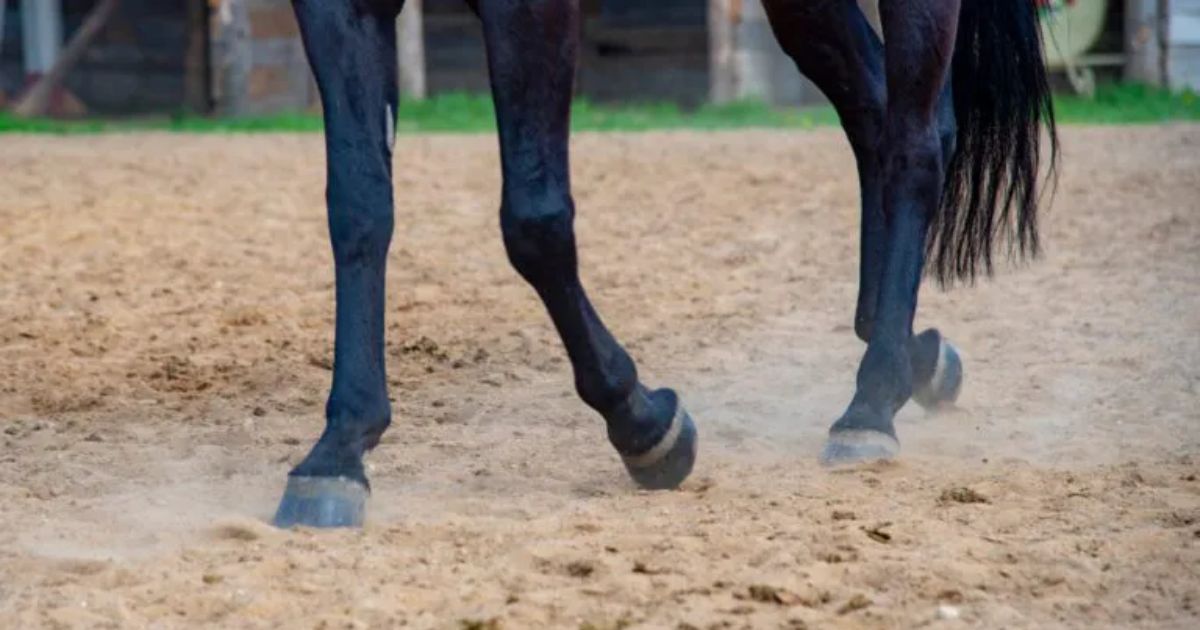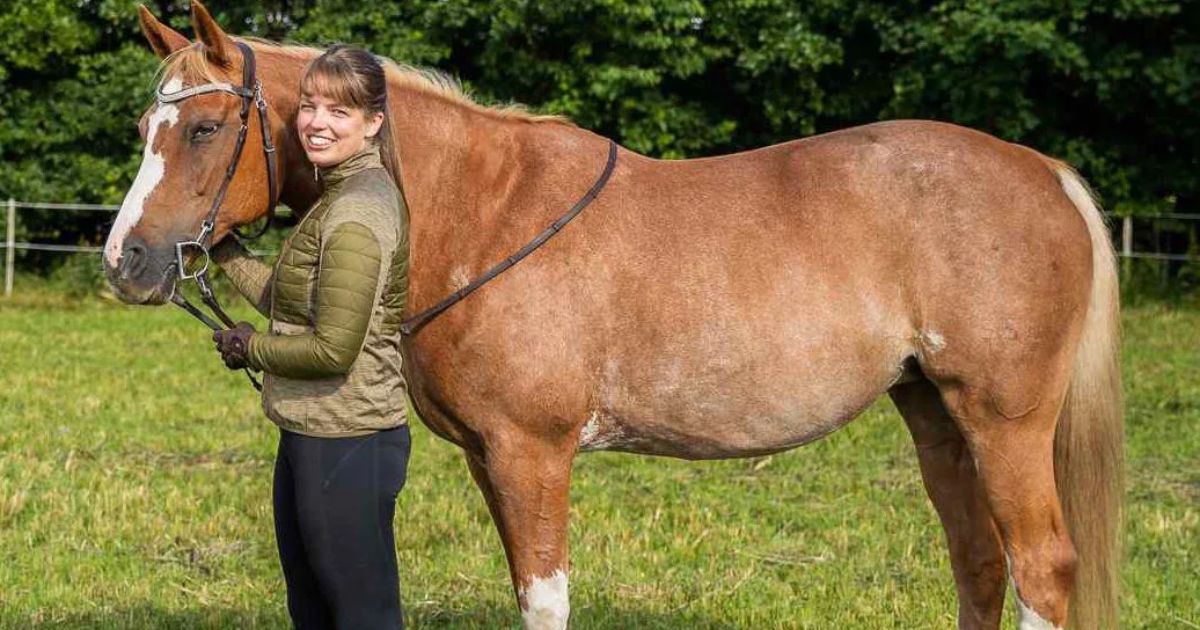Menu

At Malgré Tout, we focus on the good walk. As a rider, one might forget to train this gait. In fact, it is quite understandable, as it is certainly not easy to achieve a good walk in a horse. Below, you can read how BBH basic instructor Sarah Gerding recommends working with the walk.
Read also: Without stirrups: Gain better feeling, balance, and flexibility
A rhythmic, relaxed, focused, and grounded walk may not sound particularly complicated, but any rider knows that it can be hair-graying to try to produce. Looking around the Danish tracks, there are not many who succeed with it. Therefore, here are my thoughts on what you might not have been aware of before.
Many horses have a mess in their signals, which can make them confused, stressed, and worried, as they cannot figure out how to get the pressure from the signals to disappear. What does this have to do with the quality of your walk? A stressed, worried, or frustrated horse cannot work relaxed in its topline, no matter how much we try with various exercises, positions, and bendings, and a relaxed topline is an absolute necessity for a rhythmic walk. Moreover, a stressed or frustrated horse easily starts to trip, which also does not enhance the quality of the walk.
It is therefore important that you check if your horse understands and is comfortable with your basic signals. Does it stop when you pull the rein, without you having to affect it in any other way? Does it move forward solely for a light pressure with the leg? Does it turn and maintain direction for a light pull backward in either the right or left rein? Then you can open the horse's forelegs in or out of the volte with an open rein. If you can also get the horse to back up, just by a light pressure backward in the rein, you are well on your way. And most importantly: Can you do all this while your horse trustfully maintains contact with your hand and remains lightly ahead of the plumb line?
If the answer is no to any of these points, then you should give your basic signals a service check, so your horse can again be secure and engaged in the task. Thus, it can more likely work relaxed over the back and give a rhythmic, relaxed, focused, and ground-covering walk.
It often happens that we feel that the horse is not self-propelled, or that it does not come properly through the shoulders. This may happen even though the tempo and stride length are not faulty. We try to solve this by asking for more tempo or longer steps, and that is precisely where the problem lies.
Today's horses are bred with a really powerful motor, so they can push all the way into the sky, or in this case, all the way down into the ground. The forehand is rarely prepared to manage all this power. This means that the horse - to not run over its own forehand - has to resist and stabilize itself with the underneck. This gives inflexible shoulders and a tense back, and precisely the tense back is the main culprit when the horse walks pace.
You may see this manifested when the horse forges. This means that it does not manage to get the weight off the forehand and move the foreleg away before the hind leg comes flying. It could also be walking on two tracks precisely to avoid hitting itself.

So before we can establish a large spacious rhythmic free walk, we must get a handle on the quality of our basic walk. Down in tempo and down in stride length. The tempo and the stride length where the horse can maintain the rhythm, balance itself on a light rein, and work with shoulder freedom and flow. That is the tempo the horse is ready in and what you should build on gradually.
If the stride length becomes too long, it negatively impacts the horse's loin, causing it to tense up in self-protection. A tense loin carries a high risk of leading to pacing, or alternatively, tripping, rendering all other supportive measures we take ineffective. Therefore, experiment with the tempo and stride length and observe the difference it makes in your horse's rhythm, relaxation, and flow.
Read also: Do you remember to vary your rides?
Something we often focus too little on is the significant influence we, our bodies, our mindset, and our breathing have on the horse's movements. Let me explain in more detail.
Horses are naturally coded to cooperate, constantly striving to understand what we want from them. Therefore, it's crucial that there's harmony between what we think we are telling them and what we are actually saying. If our horses walk in a pace-like manner or with tense, tripping steps, it can be really hard for us to stay relaxed and yielding in our seat. And thus, the vicious cycle begins. The horse tenses up, we tense up, the horse tenses more, we tense more, and so on.
We riders are situated right at the place that ties the whole horse together. If the horse's back isn't soft and able to work unimpeded beneath us, then the front and hindquarters can't be connected, and the quality of the walk will never improve. If we sit with tense hips and an inflexible seat that the horse can't work through and with, then the situation only worsens.
Here, our breathing can be a huge help. The next time you walk on your horse, imagine breathing all the way down to your hips while counting to four. It might sound crazy, but try it anyway.
We're taught that our hand should be still when we ride, but still in relation to what? If you see a horse walking (or cantering) healthily through its body without a rider's influence, you'll notice it actually “bobs” its head and neck, like a pigeon walking across a town square. The horse's natural movement means that for it to be able to walk healthily and honestly through its body regardless of the degree of collection, it needs the hand to follow its movement. The hand should therefore be still in a way that doesn't interfere with the horse's mouth and movement, but not so still that it unconsciously blocks movement through the topline, back, and underneck, thereby damaging the quality of the walk.
Gradually, you'll notice how your horse can push your hips and seat bones up and forward. You'll feel how you can now move with its movements instead of hindering them. This allows the back and chest to rise and join in, connecting the fore and hindquarters, and enabling the horse to work softly through its entire topline. Now, you have a solid foundation for developing a rhythmic, relaxed, and focused basic walk.
Read also: Do you dare to let go of control and let your horse lead the way on a walk?
The last obstacle to achieving a rhythmic and relaxed walk is your own mindset. If I say, don't think about a big, pink elephant, I bet my favorite riding boots that the first thing that pops into your head is a huge pink elephant. Our brains can't create “non-images”. This also means that if we think “don't tense up”, “hope he doesn't resist the bit” or “hope he doesn't trip”, the brain creates an image of the horse doing exactly that. It tenses, resists the bit, or trips, and that's what your body responds to, leading to the outcome you fear.
Imagine that right now you are riding the most delicious walk you can imagine, and in two minutes, you say: “That walk was absolutely perfect because it was...” And then you say the three words that, for you, describe the perfect walk. It might be harder than you think.
For me, those three words would be rhythmic, relaxed, focused.
Once you've found your three words, write them down and take them with you to the stable. While doing the breathing exercise, repeat your mantra to yourself. I breathe down into my hips, while I repeat to myself: “Rhythmic, relaxed, focused, rhythmic, relaxed, focused, rhythmic, relaxed, focused”. By shifting your focus to what you want to achieve from the exercise, you increase the likelihood of it happening. In this case, you enhance the quality of your horse's basic walk.
Read also: Recognizing equine conflict behavior